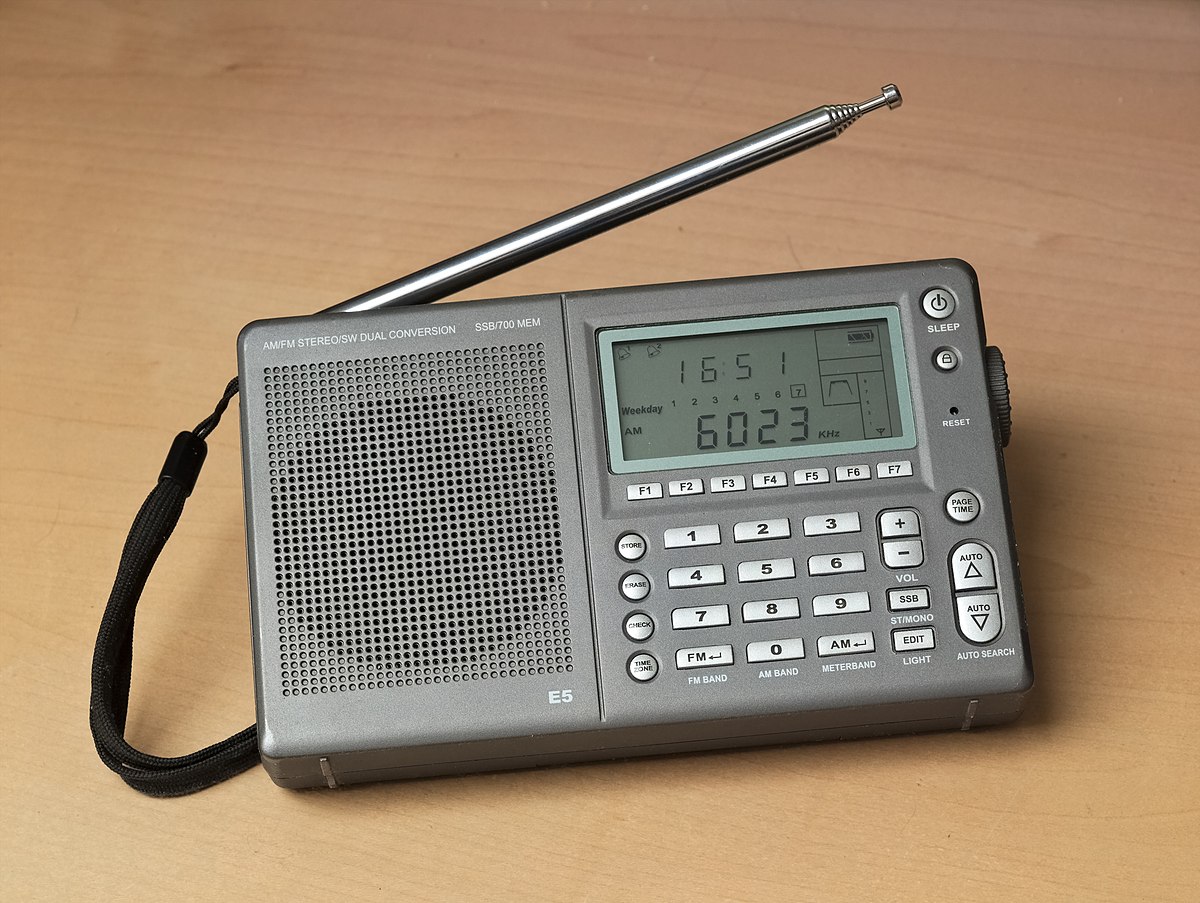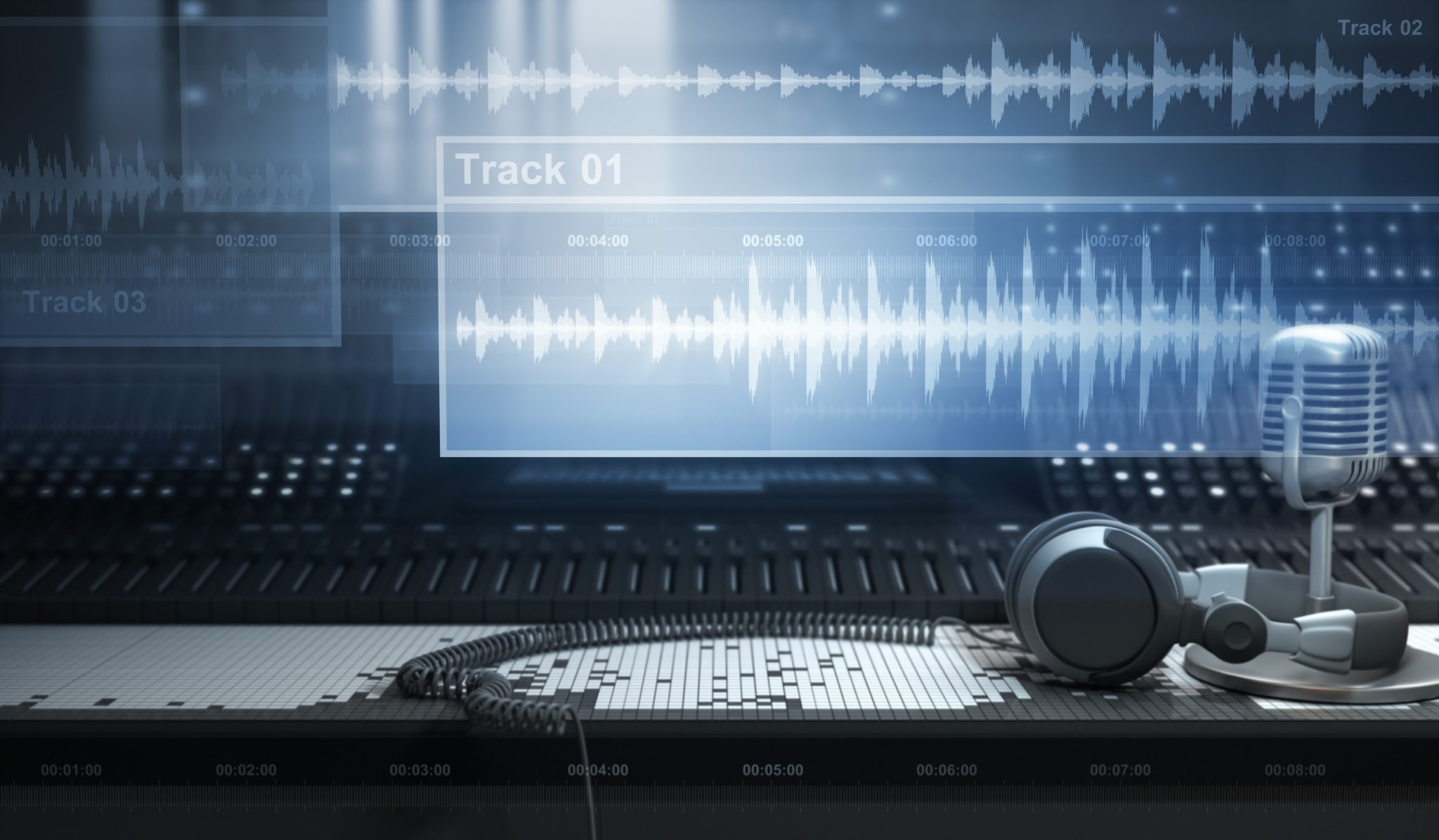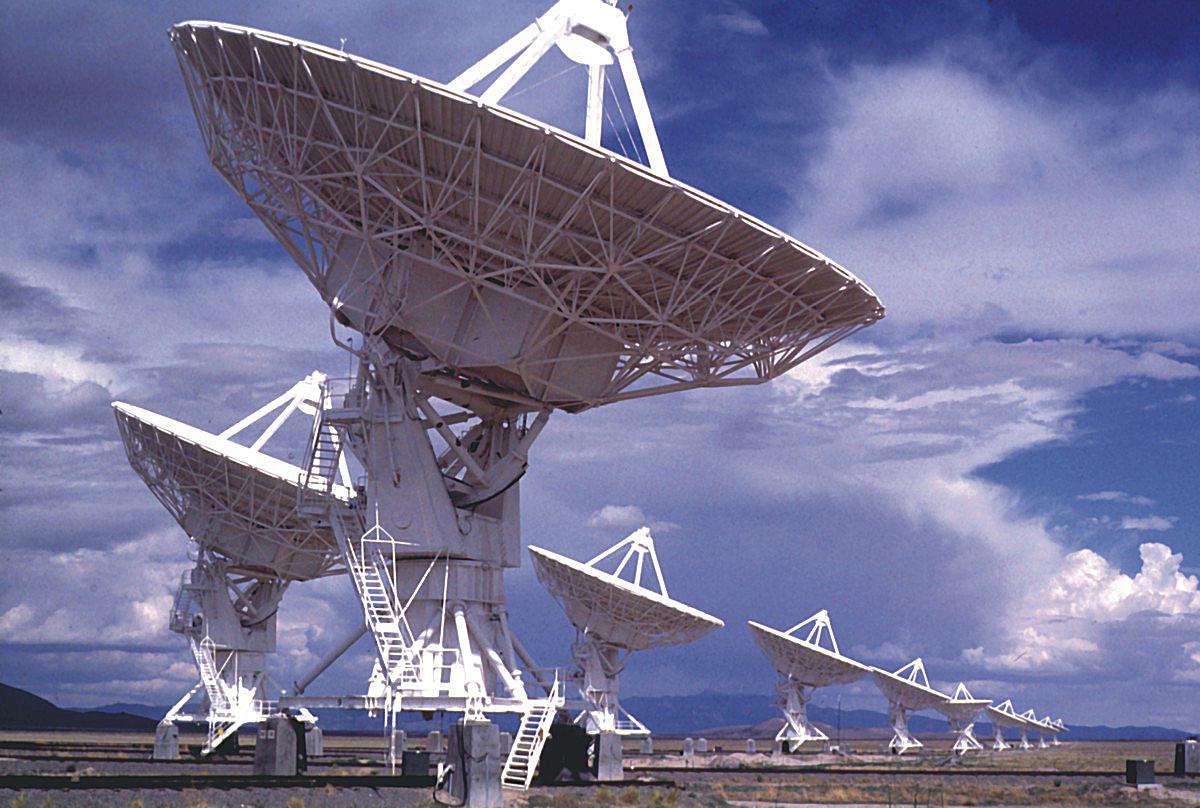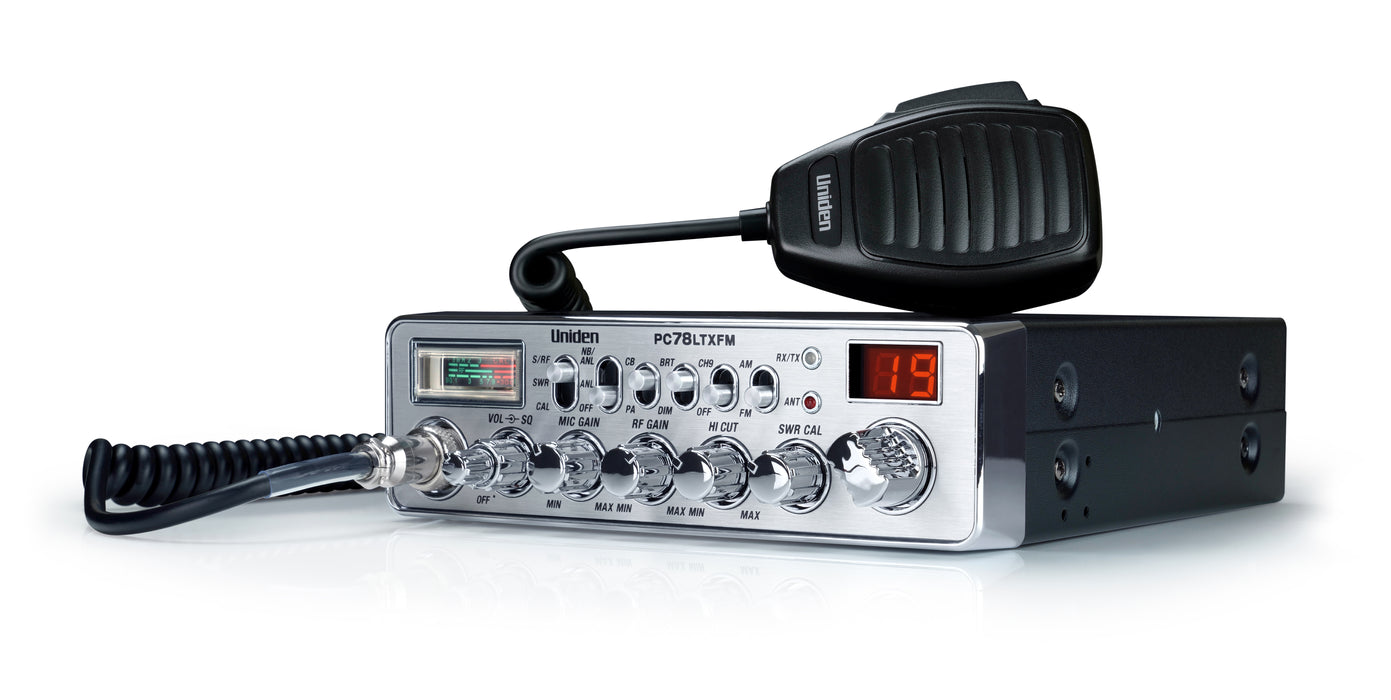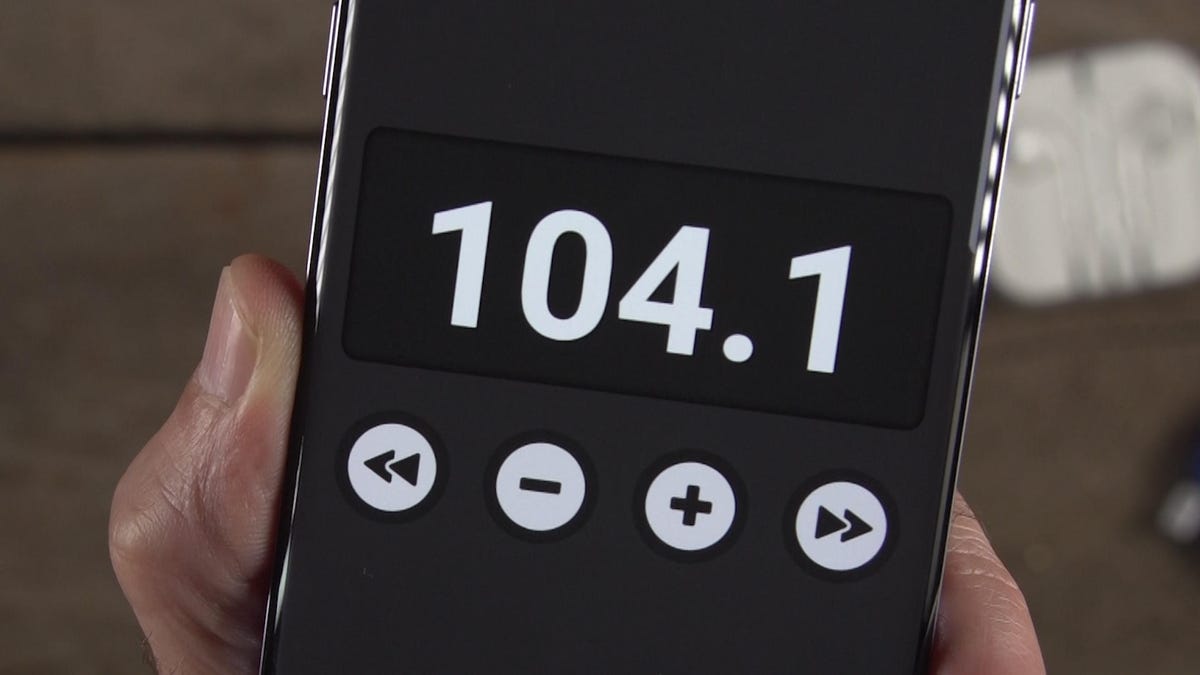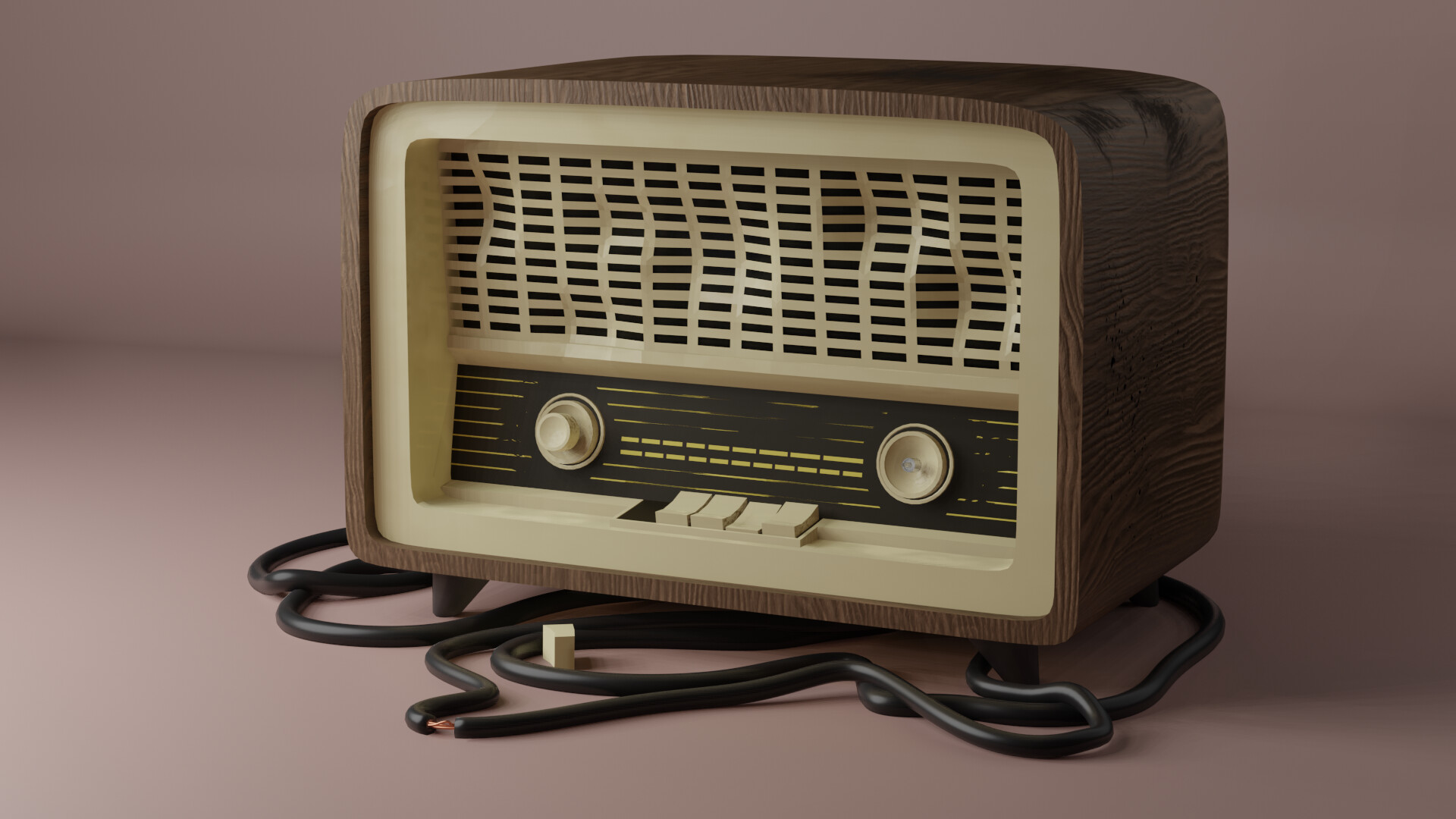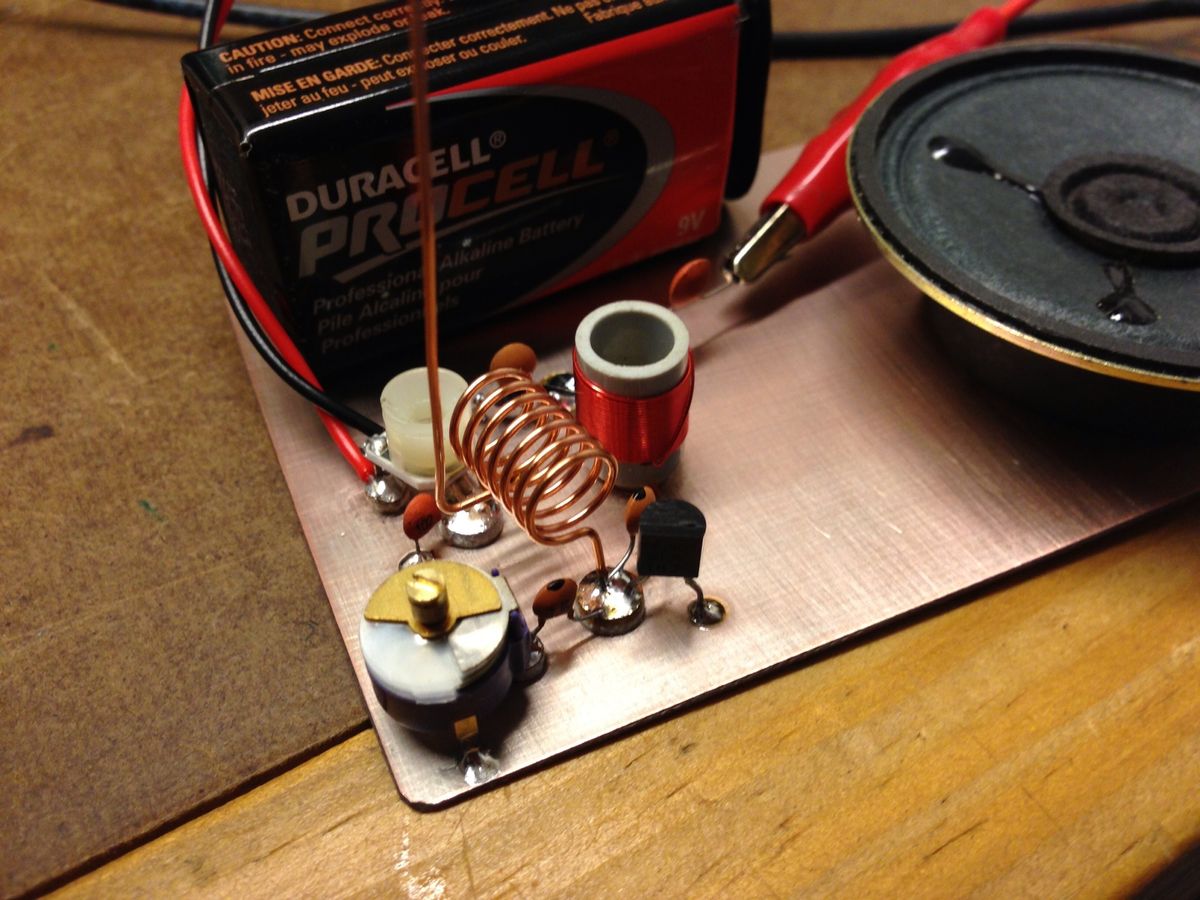Home>Devices & Equipment>Radio>How To Use A Ham Radio
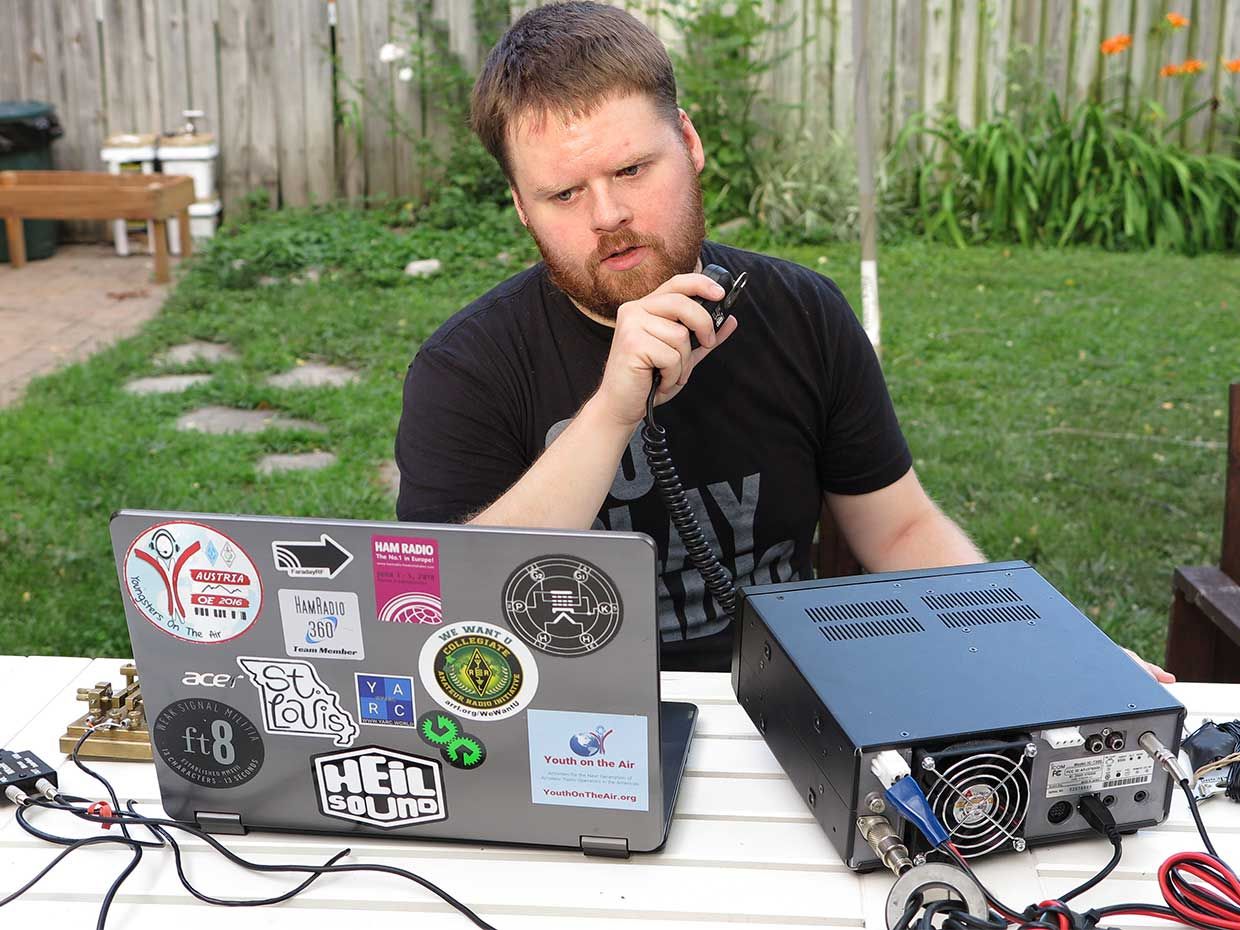

Radio
How To Use A Ham Radio
Modified: January 22, 2024
Learn how to effectively use a ham radio and master the art of communication. Unleash the potential of this versatile radio device.
(Many of the links in this article redirect to a specific reviewed product. Your purchase of these products through affiliate links helps to generate commission for AudioLover.com, at no extra cost. Learn more)
Table of Contents
Introduction
Welcome to the world of ham radio! If you have an interest in communication, technology, and a bit of nostalgia, then ham radio may be just the hobby for you. Ham radio, also known as amateur radio, allows licensed individuals to communicate with one another across the globe via radio waves. It’s a hobby that has been around for over a century and continues to captivate enthusiasts around the world.
Unlike commercial radio services, ham radio operators have the freedom to experiment, build, and modify their own equipment. It’s a hands-on hobby that offers endless possibilities for learning and connecting with others who share the same passion.
In this article, we will provide you with an overview of ham radios, guide you through the process of selecting the right one, help you set it up, and give you tips on operating and communicating effectively. We’ll also discuss proper etiquette and troubleshooting common issues you may encounter. So, whether you’re a beginner eager to dip your toes into the world of ham radio or a seasoned operator looking for some fresh insights, this article will have something for you.
Before we dive in, it’s important to note that getting licensed is a requirement for operating a ham radio legally. The licensing process involves studying and passing an exam, which tests your knowledge of radio operation, regulations, and procedures. Obtaining a license ensures that you are knowledgeable about the rules and have the skills to operate safely and responsibly.
So, let’s embark on this exciting journey into the world of ham radio, where communication knows no boundaries and the possibilities are limited only by your imagination!
Understanding Ham Radios
Ham radios, also known as amateur radios, are communication devices that operate on various radio frequencies. Unlike commercial radios, ham radios are used by licensed operators for personal and non-commercial purposes. They provide a means of communication over long distances, allowing operators to connect with people around the world.
One of the key features of ham radios is their ability to transmit and receive signals across a wide range of frequencies. This flexibility allows operators to communicate using different modes such as voice, Morse code, digital data, and even images. It’s this versatility that sets ham radios apart from other forms of communication.
Ham radios come in different types, including handheld radios, mobile radios, and base station radios. Handheld radios are portable and ideal for outdoor activities or emergency communication. Mobile radios are typically installed in vehicles and offer higher power output and extended range. Base station radios are designed for use at a fixed location, such as a home or office, and provide the most power and features.
One of the distinct advantages of ham radios is their ability to operate independently of traditional communication infrastructure, such as telephone lines or internet connections. They can be powered by batteries, generators, or solar panels, making them reliable in times of emergencies or natural disasters when other forms of communication may fail.
Amateur radio operators are assigned call signs, which serve as unique identifiers when operating on the airwaves. These call signs allow operators to establish contact with each other and also provide a way for others to identify and locate a specific operator.
Ham radios operate within specific frequency bands allocated by regulatory bodies, such as the Federal Communications Commission (FCC) in the United States. These frequency bands are designated for amateur use and provide operators with a clear spectrum to communicate without interference from other radio services.
Being an amateur radio operator opens up a world of possibilities. It allows you to connect with other operators locally and globally, participate in contests and events, provide emergency communication during times of crisis, and keep up with the latest advancements in radio technology.
In the next sections, we will explore the process of selecting the right ham radio and guide you through the setup and operation. So, let’s dive in and start your journey into the exciting world of amateur radio!
Selecting the Right Ham Radio
Selecting the right ham radio is an important decision that will greatly impact your enjoyment and experience in the hobby. With so many options available, it can be overwhelming to determine which radio is best suited for your needs. Here are some key factors to consider when selecting your ham radio:
- Operating Bands and Modes: Consider the operating bands and modes you are interested in. Different radios cover different frequency ranges, so ensure that the radio you choose supports the bands you wish to use. Additionally, if you have a preference for a particular operating mode, such as voice, Morse code, or digital, ensure that the radio has the necessary capabilities.
- Power Output: The power output of a radio determines how far your signals can reach. If you plan to communicate locally or within a short distance, a lower power output may be sufficient. However, if you want to reach distant stations or participate in long-distance communication, you may need a radio with higher power output.
- Form Factor: Consider how you plan to use your radio. Handheld radios are portable and convenient for outdoor activities. Mobile radios are installed in vehicles and offer more power and features. Base station radios are ideal for fixed locations and provide the highest power output. Choose a form factor that aligns with your intended use.
- Features and Functions: Look for radios that offer the features and functions that are important to you. Some common features include built-in antennas, digital signal processing, built-in GPS, weather alerts, and voice-activated transmission. Determine which features are essential for your needs and prioritize them in your selection process.
- Budget: Set a budget for your ham radio purchase. Prices can vary widely depending on the brand, features, and capabilities of the radio. Consider both the upfront cost of the radio and any additional accessories or antennas that may be required. It’s also worth considering if you plan to upgrade or expand your radio equipment in the future.
- Research and Reviews: Take the time to research and read reviews on different ham radio models. Look for feedback from other users to gain insights into the performance and reliability of the radios you are considering. Online forums and ham radio communities are great resources for gathering information and getting recommendations.
Once you have considered these factors, you will have a better idea of the type of ham radio that suits your needs and preferences. It’s a good practice to visit a local radio store or attend ham radio exhibitions to have hands-on experience with the radios before making your final decision.
Remember, selecting the right ham radio is a personal choice, and what works for others may not necessarily work for you. Trust your instincts, do your research, and choose the radio that aligns with your interests and goals in the hobby.
Setting Up Your Ham Radio
Setting up your ham radio station is an exciting part of the hobby. Whether you’re starting with a handheld radio or a full-fledged base station, here are some important steps to help you get your ham radio up and running:
- Choose a Location: Select a suitable location for your ham radio station. Ideally, you want a quiet and interference-free area where you can operate comfortably. If you’re setting up a base station, consider factors such as antenna placement and grounding.
- Install Your Antenna: Install the appropriate antenna for your ham radio. Antennas come in various types, including wire antennas, vertical antennas, and Yagi antennas. Ensure that the antenna is properly mounted and adjusted for optimal performance.
- Connect Power Source: Connect your ham radio to a reliable power source. Depending on your setup, this can be a power outlet, battery, or generator. Make sure to follow the manufacturer’s instructions and take necessary precautions to protect your equipment and ensure safe operation.
- Set Up Your Radio: Familiarize yourself with the controls and settings of your ham radio. Read the user manual and consult online resources if needed. Make sure to properly connect any accessories, such as microphones or speakers, and configure the radio’s settings according to your preferences.
- Adjust the Antenna Tuner: If your radio has an antenna tuner, adjust it to achieve the best SWR (Standing Wave Ratio) for optimal signal transmission. This will help maximize the efficiency of your antenna system and reduce unwanted radio reflections.
- Grounding: Provide proper grounding for your ham radio station. This helps protect your equipment from electrical surges and static electricity. Consult with an expert or refer to resources on proper grounding techniques for ham radio installations.
- Test and Calibrate: Once everything is set up, take the time to test your ham radio’s performance. Tune in to different frequencies and make test transmissions to ensure that your radio is transmitting and receiving signals properly. Use resources such as SWR meters and signal analyzers to calibrate and fine-tune your radio’s settings.
- Join a Ham Radio Club: Consider joining a local ham radio club or community. This will provide you with opportunities to meet fellow operators, learn from experienced individuals, and participate in activities such as contests, field days, and educational workshops.
Remember, setting up your ham radio station may require some trial and error. Don’t be discouraged if you encounter challenges along the way. Patience and persistence are essential in the learning process. Take the time to experiment, learn from others, and adapt your setup to meet your specific needs and goals in the hobby.
Now that your ham radio station is ready to go, it’s time to dive into the exciting world of ham radio operation and communication. In the next section, we will explore some tips and guidelines to help you make the most of your ham radio experience.
Operating and Communicating with Your Ham Radio
Now that your ham radio station is set up, it’s time to start operating and communicating with others in the amateur radio community. Here are some tips to help you make the most of your ham radio experience:
- Listen and Learn: Before jumping into conversations, take some time to listen to the frequencies you plan to operate on. This will give you an idea of the typical conversations and operating practices in that area. Listening will also help you become familiar with the local repeaters, nets, and popular calling frequencies.
- Introduce Yourself: When joining a conversation, start by introducing yourself with your call sign. This allows other operators to identify you and helps establish a friendly and professional atmosphere on the airwaves.
- Follow Operating Procedures: Familiarize yourself with the established operating procedures and practices for ham radio. This includes using appropriate language, respecting frequency allocations, and adhering to the rules and regulations set by your licensing authority. Upholding proper operating procedures contributes to a positive and enjoyable experience for everyone.
- QSOs (Conversations): Engage in QSOs (conversations) with fellow operators. Be polite, courteous, and patient while waiting for your turn to speak. Listen actively and respond appropriately to the topics being discussed. Engaging in meaningful conversations is one of the joys of ham radio.
- Experiment and Explore: Ham radio offers a wide range of modes and activities to explore. Experiment with different operating modes such as voice, Morse code, or digital communication. Participate in contests, join special event stations, and try your hand at antenna building and experimentation. There is always something new to learn and discover in the world of amateur radio.
- Emergency Communication: Amateur radio operators play an important role in providing emergency communication during times of crisis. Familiarize yourself with emergency communication protocols and be prepared to assist when needed. Train yourself in procedures such as SKYWARN for severe weather reporting or ARES/RACES for supporting emergency services.
- Respect Privacy and Security: Be mindful of the personal information shared over the airwaves. Remember that ham radio conversations can be heard by anyone with a receiver. Avoid sharing sensitive or private information that could compromise the security of yourself or others.
- Participate in Ham Radio Events: Take part in ham radio events and activities. Join local nets, attend field days, participate in contests, and contribute to community initiatives. Engaging in these events not only enhances your skills and knowledge but also helps build a strong and vibrant amateur radio community.
Remember, ham radio is all about building connections, learning, and having fun. Embrace the spirit of camaraderie and be open to making new friends and connecting with operators from different parts of the world. Enjoy the journey and the endless possibilities that ham radio has to offer!
Understanding Ham Radio Etiquette
When operating in the amateur radio community, it’s important to adhere to proper etiquette to ensure a respectful and enjoyable experience for all. Here are some guidelines to keep in mind:
- Identify Yourself: When communicating on the airwaves, always start by identifying yourself with your call sign. This not only allows others to know who you are but also fulfills legal requirements set by licensing authorities.
- Listen Before Transmitting: Before transmitting, take a moment to listen to the frequency to ensure it is not already in use. Avoid interrupting ongoing conversations and wait for an appropriate break before entering the conversation.
- Use Clear and Concise Language: Speak clearly and use proper enunciation when communicating on the airwaves. Keep conversations concise, avoiding unnecessary repetition or rambling. This helps maintain efficient and effective communication among operators.
- Respect Frequency Allocations: Each frequency band is designated for specific types of communication. Be aware of the frequency allocations and use the appropriate frequencies for your intended purpose. Avoid encroaching on frequencies reserved for other services, such as emergency channels or satellite communication.
- Control Your Transmissions: Avoid extended transmissions that monopolize the frequency. Rather, allow for breaks to let others join the conversation or make their own transmissions. Remember, amateur radio is a shared resource, and courteous sharing ensures everyone has a chance to participate.
- Be Courteous and Respectful: Treat other operators with courtesy and respect, regardless of their experience level or location. Avoid confrontational or offensive language and refrain from engaging in controversial topics that can lead to arguments or tension on the airwaves.
- Avoid Inappropriate Content: Refrain from transmitting any content that is indecent, discriminatory, or offensive. The airwaves should be a welcoming and inclusive space for all operators. Use caution when discussing personal or sensitive information and be mindful of privacy considerations.
- Be Mindful of Interference: Take care to minimize interference caused by your equipment. Ensure that your radio is properly tuned and your antenna system is functioning correctly. Avoid transmitting excessively high power levels that can cause interference or signal distortion for other operators nearby.
- Assist and Guide New Operators: As an experienced operator, be willing to assist and guide new operators who are still learning the ropes. Offer advice, share your knowledge, and encourage their participation in the amateur radio community. Remember, we all started as beginners.
- Acknowledge and Adhere to Local Regulations: Familiarize yourself with the regulations and guidelines set by your licensing authority. Stay informed about any changes or updates to operating procedures or frequency allocations. Adhering to these regulations helps maintain order and harmony within the amateur radio community.
By following these etiquette guidelines, you contribute to a positive operating environment and help foster a sense of camaraderie among amateur radio operators. Always approach your interactions with a spirit of friendliness, cooperation, and a genuine desire to communicate and connect with others.
Remember, the amateur radio community is built on mutual respect, learning, and sharing knowledge. Enjoy your experiences on the airwaves and embrace the diverse and vibrant community of ham radio operators around the world.
Troubleshooting Common Issues
While operating your ham radio, you may encounter some common issues that can hinder your communication. Here are some troubleshooting tips to help you overcome these challenges:
- Weak Signals or Interference: If you’re experiencing weak signals or interference, check the positioning and height of your antenna. Make sure it is properly aligned, elevated, and free from obstructions. Additionally, ensure that your radio is tuned to the correct frequency and that your antenna’s connectors are secure.
- Poor Audio Quality: If the audio quality is poor, check your microphone and its connection to the radio. Ensure that the microphone is not damaged or faulty. Check the audio settings on your radio and adjust the microphone gain accordingly. If using a headset or external speakers, make sure they are properly connected and functioning as well.
- Electrical Noise: If you’re experiencing electrical noise, commonly known as RF interference, try to identify and eliminate potential sources of interference. These can include nearby electronic devices, power lines, or faulty wiring in your location. Consider using ferrite beads or filters to reduce noise on your audio cables and power cords.
- Antenna Issues: If you suspect your antenna is not performing optimally, check for any damage or loose connections. Inspect the coaxial cable connecting the antenna to your radio for any signs of wear or corrosion. Test the SWR levels to ensure proper matching between the radio and the antenna. Consider consulting an expert or experienced operator for assistance in diagnosing and resolving antenna issues.
- Power Supply Problems: If your radio is not receiving power or experiencing intermittent power loss, check the power connections. Ensure that the power cables are securely connected and that the power source is reliable. If using batteries, check their condition and voltage levels. Consider using a backup power supply or a surge protector to safeguard against power fluctuations.
- Communication Range Limitations: If you’re unable to reach the desired communication range, consider upgrading your antenna to one with a higher gain. Adjust the antenna height and placement to optimize signal propagation. Explore the use of repeaters or amplifiers to extend your range. Experimenting with different operating modes or bands may also increase your chances of reaching distant stations.
- Operator Error: Sometimes, issues can arise from incorrect operation. Confirm that you are following proper operating procedures and using the correct controls and settings on your radio. Check the user manual or consult experienced operators for guidance. Regular practice and familiarity with your equipment will help minimize operator errors over time.
- Continuing Education: To troubleshoot and resolve more complex issues, consider continuing your education in ham radio. Attend workshops, join online forums, or participate in local club activities. Engaging with experienced operators and learning from their expertise will expand your troubleshooting skills and help you become a more proficient amateur radio operator.
Remember, troubleshooting is a natural part of operating any radio equipment. Approach issues with patience, systematic problem-solving, and a willingness to learn. Embrace challenges as opportunities to grow in your understanding of ham radio technology and enhance your overall experience in the hobby.
If you encounter persistent issues that you are unable to resolve, seek guidance from fellow operators or consult with local experts. Amateur radio communities are known for their helpfulness and willingness to support one another. Together, you can overcome any troubleshooting obstacles and continue to enjoy the rewarding world of ham radio.
Enhancing Your Ham Radio Experience
As with any hobby, there are numerous ways to enhance your ham radio experience and make the most of your time on the airwaves. Here are some ideas to take your amateur radio journey to the next level:
- Continued Learning: Never stop learning in the world of ham radio. Explore different operating modes, such as digital communication or satellite operations. Study advanced techniques like antenna design, propagation, or radio electronics. Read books, attend seminars, or take online courses to deepen your knowledge and expand your skillset.
- Join Special Interest Groups: Look for special interest groups or clubs that focus on specific aspects of ham radio, such as DXing, contesting, or emergency communications. These groups provide opportunities to connect with like-minded enthusiasts, share experiences, and gain specialized knowledge in your areas of interest.
- Participate in Contests and Events: Engaging in ham radio contests can be an exhilarating experience. Test your skills, improve your operating speed, and connect with operators from around the world. Participate in field days, where operators set up temporary stations outdoors, honing their skills in simulated emergency scenarios.
- Experiment with Antenna Systems: Antennas are a fundamental component of ham radio. Explore different antenna designs and experiment with building your own. Discover the advantages of directional antennas, such as Yagi or Cubical Quad, and experiment with wire antennas or loop antennas. Antenna experimentation can greatly enhance your operating range and signal quality.
- Contribute to Ham Radio Community: Find ways to give back to the ham radio community. Volunteer as a net control operator for local nets, assist with organizing radio events, or share your expertise by presenting at club meetings or educational workshops. Contributing to the community helps foster a supportive environment and allows you to inspire and educate others.
- Upgrade Your Equipment: Consider upgrading your ham radio equipment as your interest and budget allow. Upgrading to a more advanced radio with additional features or higher power output can enhance your operating capabilities. Explore accessories such as external speakers, antenna tuners, or digital modes interfaces to expand your options and capabilities.
- Experiment with Digital Modes: Explore the exciting world of digital modes in ham radio. Learn about popular modes like PSK31, FT8, or SSTV, which allow for digital communication and can provide better signal quality and weak signal reception. Experimenting with digital modes opens up new possibilities for long-distance communication and unique operating experiences.
- Participate in Ham Radio Awards: Pursue ham radio awards and certificates that recognize your achievements. Work towards contacting stations in different countries or qualifying for specialized operating awards. Aim for prestigious awards like DXCC (DX Century Club) or WAS (Worked All States) to challenge yourself and set new goals.
Remember, the ham radio hobby offers countless opportunities for growth, learning, and connection. Embrace the diversity of the amateur radio community and explore different aspects of the hobby that align with your interests and aspirations. Continuously seek out new challenges and experiences to enhance your ham radio journey and make it truly rewarding.
With each new accomplishment and discovery, you’ll find yourself more deeply connected to the fascinating world of ham radio and the vibrant community of operators around the globe.
Conclusion
Congratulations on embarking on your ham radio journey! The world of amateur radio offers endless opportunities for communication, learning, and exploration. By understanding ham radios, selecting the right equipment, setting up your station properly, and following operating procedures, you can enjoy the exciting hobby of ham radio to its fullest.
Remember to practice proper etiquette, be respectful to fellow operators, and continuously strive to enhance your skills and knowledge. Troubleshooting common issues and seeking guidance from experienced operators will ensure a smooth and enjoyable operating experience.
As you delve deeper into the hobby, consider joining ham radio clubs, participating in contests, and exploring different operating modes. Engage with the diverse ham radio community, share your experiences, and contribute to the growth of the hobby.
Through ongoing learning, experimentation with antennas and equipment, and participation in ham radio events, you will enhance your skills, expand your horizons, and forge connections with operators from around the world.
Ham radio is more than just a hobby; it’s a way to connect with others, contribute to emergency communications, explore technical innovations, and develop lifelong friendships. Embrace the unique experiences that ham radio offers and enjoy the journey as you expand your knowledge and proficiency in this fascinating field.
So, grab your radio, tune in to the frequencies, and join the vibrant world of ham radio. Start your adventure today and let the airwaves be your gateway to new connections, experiences, and endless possibilities!

